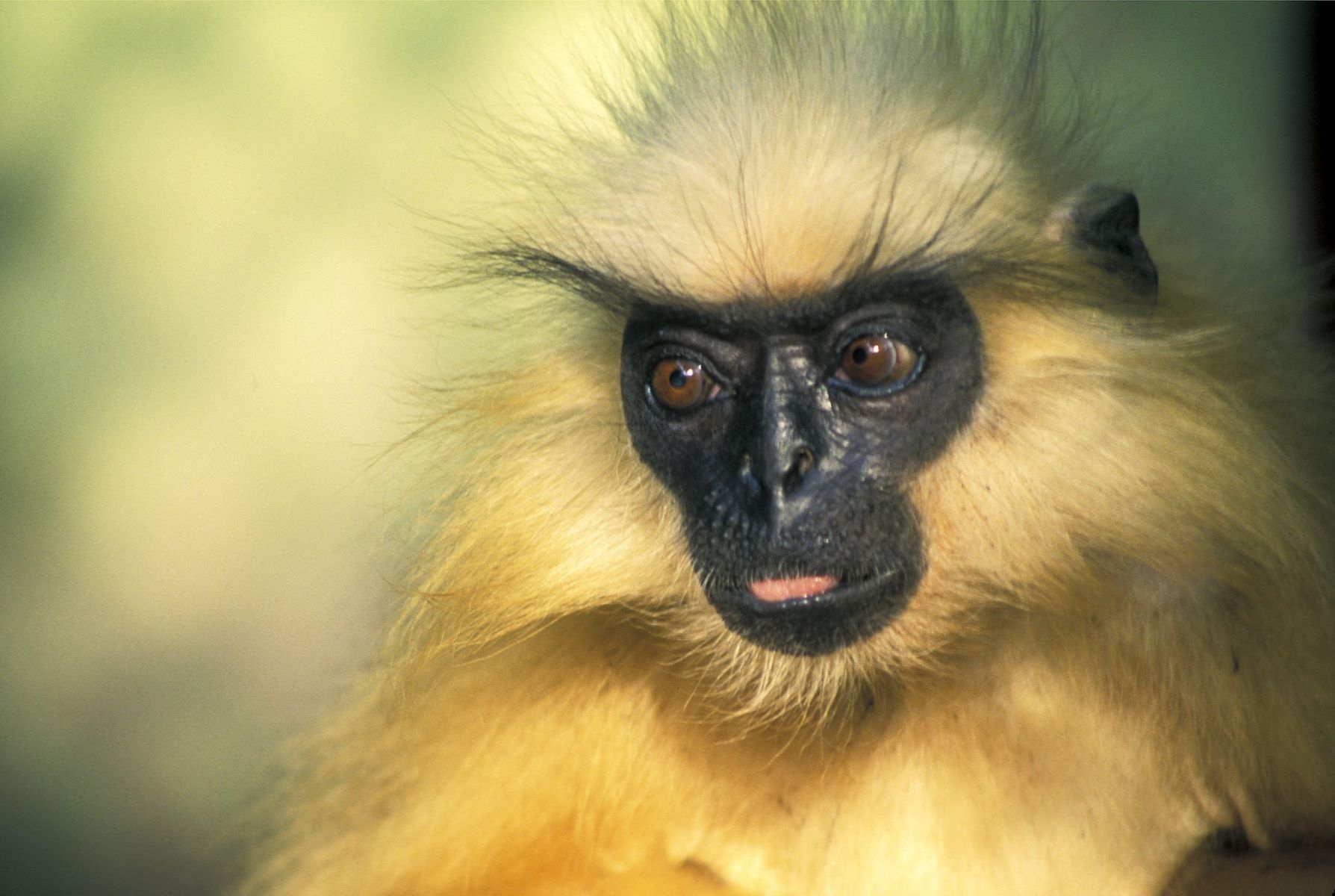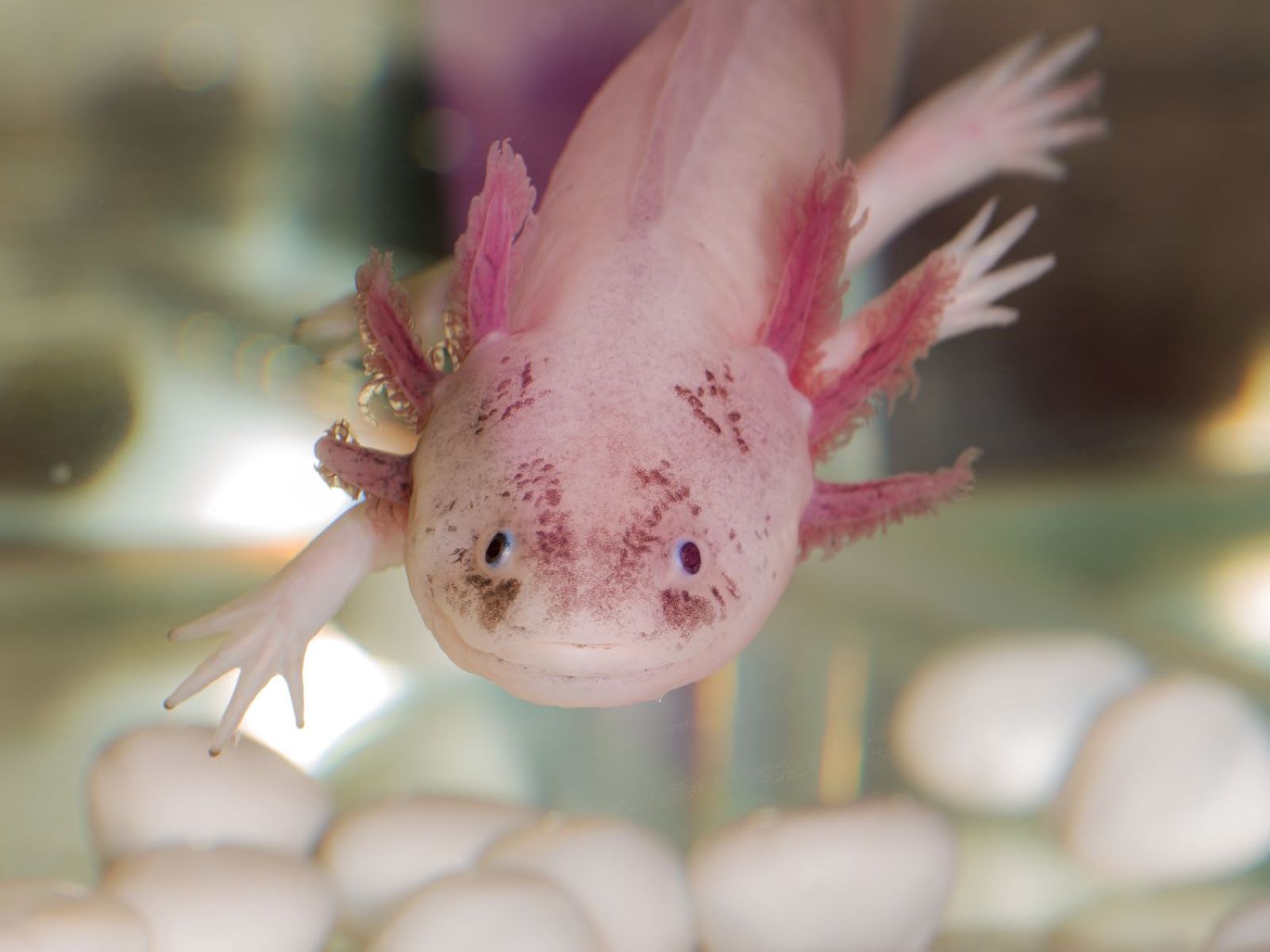

Science
10 Lesser-Known Animals That Start With “L”
Published: February 6, 2024
Explore the fascinating world of science with these 10 lesser-known animals that all start with the letter "L". Discover unique creatures and their intriguing behaviors.
(Many of the links in this article redirect to a specific reviewed product. Your purchase of these products through affiliate links helps to generate commission for Regretless.com, at no extra cost. Learn more)
Table of Contents
Lamprey
Lampreys are truly fascinating creatures that have captured the curiosity of scientists and nature enthusiasts alike. These jawless fish have been around for hundreds of millions of years, making them one of the oldest vertebrate species on the planet. They belong to the order Petromyzontiformes and are known for their distinctive appearance and unique feeding habits.
Unique Physical Characteristics
One of the most striking features of lampreys is their eel-like body, which is elongated and lacks paired fins. Their most distinctive physical trait, however, is their mouth. Lampreys are characterized by their circular, jawless mouth filled with rows of sharp teeth. This specialized mouth structure allows them to attach to other fish and marine mammals, where they use their rasping tongue to feed on their host's blood and bodily fluids.
Diverse Habitats
Lampreys are incredibly adaptable and can be found in a wide range of aquatic environments, including freshwater and saltwater habitats. They are often associated with rivers, streams, and coastal areas, where they play a crucial role in the ecosystem as both predators and prey.
Life Cycle and Reproduction
The life cycle of lampreys is truly remarkable. They undergo a dramatic transformation from larvae to adults, with some species spending several years in freshwater as filter-feeding larvae before migrating to the ocean. After a period of growth and maturation in the sea, adult lampreys return to freshwater to spawn and complete their life cycle.
Ecological Importance
Despite their parasitic feeding habits, lampreys play a vital role in maintaining the balance of aquatic ecosystems. As filter feeders during their larval stage, they help regulate water quality by consuming organic matter and algae. Additionally, their presence in food webs provides sustenance for a variety of other species, including birds, mammals, and predatory fish.
Conservation Efforts
In recent years, concerns have been raised about the declining populations of some lamprey species due to habitat loss, pollution, and overfishing. Conservation efforts have been implemented to protect and restore lamprey habitats, including the construction of fish passages and the regulation of fishing practices.
Lampreys are truly remarkable creatures that continue to intrigue scientists and conservationists. Their ancient lineage, unique feeding habits, and ecological significance make them a compelling subject of study and a crucial component of aquatic ecosystems.
Leafy Sea Dragon
The leafy sea dragon, also known by its scientific name Phycodurus eques, is a mesmerizing marine fish that inhabits the coastal waters of southern and western Australia. Renowned for its striking resemblance to seaweed and its graceful, almost ethereal movements, the leafy sea dragon is a true marvel of nature.
Enchanting Appearance
The leafy sea dragon's appearance is nothing short of extraordinary. Its body is adorned with elaborate, leaf-like appendages that provide exceptional camouflage among the seaweed and kelp forests where it resides. These leafy protrusions, ranging in color from vibrant yellows to deep oranges, enable the sea dragon to blend seamlessly into its surroundings, making it incredibly challenging for predators to spot.
Unique Reproductive Behavior
One of the most captivating aspects of the leafy sea dragon is its reproductive behavior. Unlike most fish species, it is the male leafy sea dragon that assumes the role of caretaker during the breeding process. After the female deposits her eggs onto a specialized area on the male's tail, he diligently nurtures them until they hatch. This remarkable display of paternal care is a rare phenomenon in the animal kingdom and adds to the allure of this enchanting creature.
Conservation Status
Despite their captivating presence, leafy sea dragons face significant threats, primarily due to habitat degradation and human activities. As a result, they are classified as near-threatened on the IUCN Red List. Efforts to protect their habitats and regulate human interactions in their native waters are crucial for the long-term survival of these remarkable creatures.
Ecological Significance
Beyond their aesthetic appeal, leafy sea dragons play a vital role in maintaining the balance of marine ecosystems. As voracious predators of small crustaceans and other tiny marine organisms, they contribute to controlling population levels within their habitats. Additionally, their presence serves as an indicator of the health of the marine environments they inhabit, making them an essential focus of conservation efforts.
Captivating Curiosity
The leafy sea dragon's captivating appearance and unique behaviors have captivated the curiosity of marine biologists, conservationists, and nature enthusiasts worldwide. Their delicate beauty and the mysteries surrounding their lives serve as a poignant reminder of the awe-inspiring diversity and complexity of the natural world.
The leafy sea dragon stands as a testament to the wonders that lie beneath the waves and serves as a poignant reminder of the importance of preserving and protecting our oceans and the extraordinary creatures that call them home.
Lemming
Lemmings, often associated with the popular misconception of mass suicidal behavior, are small rodents that inhabit the Arctic tundra and other cold regions. These fascinating creatures, belonging to the subfamily Arvicolinae, have captured the interest of scientists and nature enthusiasts due to their unique behaviors and remarkable adaptations to extreme environments.
Unique Adaptations and Behaviors
Lemmings are well-adapted to the harsh conditions of their habitats, possessing dense fur and specialized feet that enable them to navigate through the snow and ice with ease. Their population dynamics are also a subject of intrigue, as they are known for cyclic fluctuations in numbers, with periods of rapid population growth followed by dramatic declines.
One of the most captivating aspects of lemmings is their migratory behavior. During population booms, lemmings embark on mass migrations in search of new areas with abundant food and resources. These migrations can cover significant distances and often lead lemmings into unfamiliar territories, where they face numerous challenges and predators.
Ecological Significance
Despite their small size, lemmings play a crucial role in the Arctic ecosystem. As herbivorous rodents, they contribute to the dynamics of plant communities through their feeding habits and interactions with vegetation. Additionally, they serve as a vital food source for a variety of predators, including birds of prey, foxes, and other carnivorous mammals, thus influencing the balance of predator-prey relationships in their habitats.
Misconceptions and Realities
The popular notion of lemmings engaging in mass suicidal behavior is a myth that has been perpetuated in folklore and popular culture. While lemmings do experience population fluctuations and engage in migratory movements, there is no evidence to support the idea of intentional mass suicide among these creatures. Instead, their population dynamics are driven by complex ecological factors, including food availability, predation, and reproductive patterns.
Conservation Concerns
The habitats of lemmings are increasingly threatened by climate change and human activities, posing challenges to their long-term survival. As key components of Arctic ecosystems, the conservation of lemmings is essential for maintaining the ecological balance and biodiversity of these fragile regions. Efforts to protect their habitats and mitigate the impacts of environmental changes are crucial for the well-being of lemming populations and the ecosystems they inhabit.
Lemmings, with their remarkable adaptations and intriguing behaviors, continue to be a subject of scientific study and a symbol of the resilience and complexity of Arctic ecosystems. Their presence serves as a reminder of the interconnectedness of all living organisms and the importance of preserving the delicate balance of natural environments.
Liger
The liger, a majestic hybrid big cat, is the offspring of a male lion and a female tiger. This extraordinary crossbreed inherits the distinct physical characteristics of both parent species, resulting in a creature of impressive size and unparalleled beauty. Ligers are renowned for their massive stature, with some individuals reaching lengths of over 10 feet and weighing in excess of 900 pounds, making them the largest known feline species on the planet.
One of the most striking features of ligers is their awe-inspiring appearance. They typically exhibit the tawny fur and majestic mane of lions, combined with the subtle stripes and powerful build of tigers. This unique combination of traits makes ligers a captivating sight, drawing the admiration of animal enthusiasts and sparking fascination worldwide.
Beyond their remarkable physical attributes, ligers possess a gentle and sociable nature, often displaying characteristics that differ from those of their parent species. They are known for their affable temperament and sociable behavior, traits that set them apart from the solitary nature of lions and tigers. This affability has contributed to ligers becoming popular attractions in wildlife sanctuaries and zoological parks, where they captivate visitors with their extraordinary presence.
Despite their captivating allure, ligers are not found in the wild. Their existence is primarily the result of human intervention, as lions and tigers inhabit different geographical regions and would not typically encounter each other in nature. The breeding of ligers has raised ethical and conservation concerns, prompting discussions about the responsible management of hybrid species and the preservation of the genetic diversity of wild feline populations.
Ligers serve as a poignant reminder of the complexities and ethical considerations surrounding human interactions with wild animals. Their existence prompts reflection on the impact of human activities on the natural world and underscores the importance of responsible stewardship and conservation efforts to safeguard the diversity and integrity of Earth's ecosystems.
The enigmatic allure of ligers continues to captivate the imagination of people around the globe, sparking discussions about the boundaries of nature and the ethical implications of human-mediated hybridization. Their existence serves as a testament to the intricate interplay between human actions and the delicate balance of the natural world, prompting contemplation on our role as stewards of the planet's biodiversity.
Long-Eared Jerboa
The long-eared jerboa, scientifically known as Euchoreutes naso, is a remarkable and enigmatic small mammal that inhabits the desolate expanses of the Gobi Desert and other arid regions in China and Mongolia. This extraordinary creature has garnered widespread attention for its distinctive appearance and remarkable adaptations to its harsh desert environment.
The long-eared jerboa is characterized by its endearing features, including disproportionately long hind legs and, as the name suggests, remarkably elongated ears. These unique physical attributes enable the jerboa to navigate its sandy habitat with agility, using its powerful hind limbs for swift and efficient movement and its elongated ears to detect subtle sounds and potential predators in the vast desert landscape.
One of the most captivating aspects of the long-eared jerboa is its nocturnal lifestyle. Under the cover of darkness, this elusive creature emerges from its underground burrow to forage for seeds, plants, and insects, utilizing its keen senses and remarkable leaping abilities to navigate the desert terrain and evade potential threats. The jerboa's ability to thrive in the harsh desert environment, where temperatures can fluctuate dramatically and resources are scarce, is a testament to its exceptional adaptations and resilience.
Despite its remarkable adaptations and unique behaviors, the long-eared jerboa faces significant challenges to its survival. Habitat loss, primarily due to human activities and desertification, poses a considerable threat to the long-term well-being of this captivating species. Conservation efforts aimed at protecting the fragile desert ecosystems and mitigating the impacts of human encroachment are crucial for ensuring the continued existence of the long-eared jerboa and the preservation of its unique desert habitat.
The long-eared jerboa serves as a poignant symbol of the resilience and adaptability of life in extreme environments. Its presence in the desolate landscapes of the Gobi Desert inspires awe and underscores the intricate interplay between organisms and their habitats. By shedding light on the remarkable adaptations and conservation challenges of the long-eared jerboa, we gain a deeper appreciation for the diversity and fragility of Earth's ecosystems and the importance of safeguarding the natural world for future generations.
Lynx
The lynx, a medium-sized wild cat belonging to the genus Lynx, encompasses a group of fascinating and elusive feline species that inhabit diverse ecosystems across North America, Europe, and Asia. Renowned for their distinctive tufted ears, robust build, and remarkable hunting prowess, lynxes have captivated the imagination of wildlife enthusiasts and researchers alike.
Diverse Species and Habitats
Lynxes are represented by several species, including the Eurasian lynx, the Canadian lynx, the Iberian lynx, and the bobcat. Each species has adapted to thrive in specific habitats, ranging from dense boreal forests and rugged mountainous regions to arid scrublands and grassy plains. Their ability to navigate diverse landscapes and thrive in varying environmental conditions showcases their remarkable adaptability and ecological resilience.
Unique Physical Characteristics
One of the most striking features of lynxes is their distinctive appearance, characterized by dense fur, a short tail, and prominent facial markings. Their tufted ears, adorned with long, black ear tufts, serve as sensory adaptations, enhancing their auditory acuity and providing camouflage in their natural surroundings. This, coupled with their keen eyesight and acute sense of smell, equips lynxes with the sensory prowess essential for their role as skilled predators.
Hunting and Prey Dynamics
Lynxes are renowned for their prowess as stealthy hunters, preying primarily on small to medium-sized mammals such as hares, rabbits, and rodents. Their remarkable agility, keen senses, and powerful pouncing abilities enable them to secure their elusive prey, contributing to the regulation of prey populations within their ecosystems. The delicate balance of predator-prey dynamics, in which lynxes play a crucial role, underscores their significance in maintaining the ecological equilibrium of their habitats.
Conservation Concerns and Efforts
Despite their remarkable adaptations and ecological importance, lynxes face pressing conservation challenges, including habitat loss, human-wildlife conflicts, and illegal poaching. Several lynx species are classified as threatened or endangered, highlighting the urgency of conservation measures to safeguard their populations and habitats. Efforts such as habitat preservation, wildlife corridors, and community-based conservation initiatives are instrumental in mitigating the threats faced by lynxes and promoting their long-term survival.
A Symbol of Wild Majesty
The enigmatic presence of lynxes in diverse ecosystems serves as a testament to the untamed majesty of the natural world. Their elusive nature and vital ecological roles make them emblematic of the intricate web of life and the interconnectedness of species within their habitats. By recognizing and addressing the conservation needs of lynxes, we reaffirm our commitment to preserving the splendor and diversity of Earth's wildlife for generations to come.
Langur
Langurs, belonging to the genus Semnopithecus, are a diverse group of leaf-eating monkeys found across the Indian subcontinent and Southeast Asia. Renowned for their striking appearance, social behaviors, and significant cultural symbolism, langurs hold a revered place in the ecosystems they inhabit and the cultural tapestry of the regions they call home.
Remarkable Physical Characteristics
One of the most captivating features of langurs is their visually striking appearance. These primates exhibit a wide range of colors, from ash grey and black to shades of brown and gold, often accompanied by contrasting facial markings and tufted tails. Their long, slender bodies and distinctive, expressive faces contribute to their charismatic presence in their natural habitats. Additionally, langurs are equipped with powerful hind limbs, enabling them to navigate the treetops with agility and grace, showcasing their arboreal adaptations.
Social Structure and Behavior
Langurs are highly social animals, forming cohesive groups known as troops that consist of multiple females, their offspring, and a dominant male. Within these troops, intricate social hierarchies and communication systems govern their interactions and dynamics. The expressive vocalizations and nuanced body language of langurs play a crucial role in maintaining social cohesion, facilitating group movements, and signaling potential threats or opportunities within their environment.
Ecological Significance
As prominent herbivores in their ecosystems, langurs play a vital role in shaping the dynamics of forest habitats through their feeding habits. Their consumption of leaves, fruits, and other plant matter contributes to seed dispersal and the maintenance of vegetative communities, influencing the overall biodiversity and ecological balance of their habitats. Furthermore, langurs serve as prey for a variety of predators, contributing to the intricate web of predator-prey relationships within their ecosystems.
Cultural and Spiritual Significance
Langurs hold deep cultural and spiritual significance in many societies across their range. In Hindu mythology, the revered monkey god Hanuman is often depicted as a langur, symbolizing strength, devotion, and loyalty. As a result, langurs are often protected and revered in areas where Hindu traditions are prominent, highlighting the intersection of cultural beliefs and wildlife conservation.
Conservation Challenges
Despite their cultural importance and ecological significance, langurs face escalating threats, including habitat loss, human-wildlife conflicts, and illegal wildlife trade. The fragmentation of their forest habitats due to deforestation and human encroachment poses a significant risk to langur populations, necessitating concerted conservation efforts to ensure their long-term survival.
Langurs, with their captivating presence and significant ecological and cultural roles, epitomize the intricate connections between wildlife and human societies. By recognizing and addressing the conservation needs of langurs, we reaffirm our commitment to preserving the diversity and richness of Earth's ecosystems and cultural heritage for generations to come.
Lizardfish
Lizardfish, belonging to the family Synodontidae, are a fascinating group of predatory marine fish found in tropical and subtropical waters around the world. These remarkable creatures, with their elongated bodies, formidable jaws, and cryptic hunting strategies, play a significant role in marine ecosystems and exhibit a diverse array of adaptations that contribute to their success as apex predators.
Unique Morphology and Adaptations
The physical characteristics of lizardfish are truly remarkable. Their slender, elongated bodies are complemented by large, predatory jaws equipped with sharp teeth, enabling them to capture a wide range of prey, including smaller fish and crustaceans. Additionally, lizardfish possess intricate coloration and patterns that aid in their camouflage, allowing them to blend seamlessly into their surroundings and ambush unsuspecting prey with precision.
One of the most intriguing adaptations of lizardfish is their ability to expand their gape rapidly, creating a suction force that enables them to engulf prey items in a fraction of a second. This specialized feeding mechanism, coupled with their exceptional maneuverability and swift strikes, underscores their prowess as stealthy hunters in the intricate underwater realm.
Ecological Significance and Predatory Role
As apex predators in marine environments, lizardfish play a crucial role in regulating the populations of smaller fish and invertebrates, contributing to the overall balance and health of coral reef and coastal ecosystems. Their predatory activities influence the distribution and abundance of prey species, shaping the dynamics of food webs and exerting cascading effects on the ecological communities they inhabit.
Furthermore, the presence of lizardfish serves as an indicator of the ecological integrity of their habitats. Their abundance and distribution provide valuable insights into the health and resilience of marine ecosystems, making them a focal point of scientific research and conservation efforts aimed at preserving the biodiversity and functioning of coastal and reef environments.
Conservation Considerations
Despite their ecological significance, lizardfish face increasing pressures due to human activities, including overfishing, habitat degradation, and the impacts of climate change on marine environments. The degradation of coral reefs, mangroves, and coastal habitats poses a significant threat to the long-term well-being of lizardfish populations, necessitating comprehensive conservation measures to mitigate these challenges.
Efforts to establish marine protected areas, regulate fishing practices, and promote sustainable management of coastal resources are essential for safeguarding the habitats and populations of lizardfish. Additionally, raising awareness about the ecological importance of these enigmatic predators and their contributions to marine biodiversity is crucial for garnering support for their conservation and the preservation of the intricate marine ecosystems they inhabit.
Lizardfish, with their remarkable adaptations and predatory prowess, stand as emblematic figures in the intricate tapestry of marine life. Their presence serves as a poignant reminder of the interconnectedness of species within the oceanic realm and the imperative of preserving the delicate balance of marine ecosystems for the benefit of present and future generations.
Lorikeet
Lorikeets, belonging to the subfamily Loriinae, are a captivating and diverse group of small to medium-sized parrots known for their vibrant plumage, remarkable acrobatic abilities, and specialized dietary preferences. These charming avian species, native to the regions of Oceania, Southeast Asia, and the Pacific, have enamored bird enthusiasts and nature lovers with their exuberant personalities and distinctive ecological roles within their native habitats.
Striking Visual Splendor
One of the most enchanting aspects of lorikeets is their visually stunning appearance. Their plumage, adorned with a kaleidoscope of colors ranging from vivid greens, blues, reds, and yellows, captivates the eye and reflects the vibrant natural landscapes they inhabit. The iridescent hues of their feathers, coupled with their agile and graceful flight, make lorikeets a spectacle to behold, adding a touch of brilliance to the ecosystems they call home.
Specialized Feeding Habits
Lorikeets are renowned for their unique dietary preferences, primarily consisting of nectar, pollen, fruits, and blossoms. Their specialized brush-tipped tongues, adapted for extracting nectar from flowers, exemplify their remarkable adaptations to a nectarivorous lifestyle. This dietary specialization not only distinguishes lorikeets from other parrot species but also underscores their crucial role as pollinators and contributors to the reproductive success of numerous plant species in their habitats.
Ecological Significance
As proficient pollinators, lorikeets play a pivotal role in maintaining the health and diversity of floral communities within their ecosystems. Their foraging activities facilitate the transfer of pollen between flowers, promoting the fertilization and propagation of plant species. This symbiotic relationship between lorikeets and flowering plants underscores their significance as key contributors to the ecological balance and reproductive cycles of the diverse flora in their native environments.
Conservation Challenges and Efforts
Despite their ecological importance, lorikeets face conservation challenges stemming from habitat loss, deforestation, and the impacts of urbanization. The degradation of their natural habitats poses a significant threat to their long-term survival, necessitating concerted conservation efforts to preserve the biodiversity and ecological functioning of the regions they inhabit. Initiatives focused on habitat preservation, sustainable land management, and public awareness are essential for safeguarding the well-being of lorikeet populations and the ecosystems they support.
Lorikeets, with their resplendent plumage, specialized dietary habits, and vital ecological roles, stand as emblematic symbols of the intricate connections between avian species and their habitats. By recognizing and addressing the conservation needs of lorikeets, we reaffirm our commitment to preserving the vibrancy and diversity of Earth's avian communities and the delicate balance of their natural environments.
Lyrebird
The lyrebird, renowned for its remarkable vocal abilities and captivating displays, holds a revered place in the rich tapestry of Australia's avian fauna. This iconic bird, belonging to the family Menuridae, encompasses a group of ground-dwelling species known for their elaborate tail feathers, melodious calls, and extraordinary mimicry skills. Found in the lush forests and woodlands of Australia, lyrebirds have captivated the imagination of naturalists and bird enthusiasts with their enigmatic behaviors and vocal virtuosity.
Enigmatic Mimicry and Vocal Prowess
One of the most extraordinary attributes of the lyrebird is its unparalleled mimicry abilities. These avian virtuosos have the remarkable capacity to imitate a diverse array of sounds, including the calls of other bird species, the melodies of musical instruments, and even human-made noises such as camera shutters and car alarms. Their uncanny ability to replicate complex auditory patterns with astonishing accuracy has earned them a reputation as nature's consummate mimics, showcasing the intricacies of their vocal repertoire.
Elaborate Courtship Displays
During the breeding season, male lyrebirds orchestrate elaborate courtship displays to attract potential mates. These displays often involve the male perching on a prominent stage, such as a raised mound or fallen tree, where he showcases his splendid tail feathers in a mesmerizing fan-like arrangement. Accompanied by melodic calls and intricate dance movements, the male lyrebird seeks to captivate the attention of nearby females, demonstrating his fitness and genetic quality through his ornate displays and vocal performances.
Ecological Significance and Conservation Considerations
Beyond their captivating behaviors, lyrebirds play a vital ecological role in their forest habitats. As omnivorous foragers, they contribute to the dispersal of seeds and the regulation of invertebrate populations, influencing the dynamics of forest ecosystems. However, these iconic birds face conservation challenges due to habitat loss, human disturbances, and the impacts of climate change on their native environments. Efforts to protect and restore their forest habitats, coupled with public education on the importance of preserving the biodiversity of Australian woodlands, are essential for ensuring the continued existence of these captivating avian performers.
A Symbol of Natural Splendor
The presence of the lyrebird in the verdant landscapes of Australia serves as a poignant reminder of the intricate connections between avian species and their habitats. By recognizing the captivating vocal talents and courtship displays of the lyrebird, we gain a deeper appreciation for the diversity and splendor of Earth's avian communities and the imperative of preserving the delicate balance of natural ecosystems for the benefit of present and future generations.





